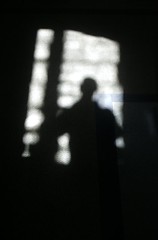stilled life
And one reason for this atheistical failure of interest is its failure of theological radicalness: such atheists are but what are called 'negative' theologians, but attenuated ones. In a sense which I hope to clarify in a moment, they give shorter measure than good theologians do in the extent of what they deny. It is indeed extrordinary how theologically conservative some atheists are, and one might even speculate that atheists of this species have an interest in resisting such renewals of Christian faith and practice as would require the renewal of their rejection of it. I suppose it must be upsetting for atheists when the target of their rejection moves; for insofar as a moving Christian target does upset the atheist, it reveals, depressingly, the parasitical character of the rejection. So a static atheism can have no wish for a moving theism. (D Turner, 'How to be an atheist': link) || When René Magritte made his 1949 parody/tribute version of Manet's "Le Balcon", he metamorphosed the figures on the balcony into three wooden coffins, seated or standing. A pictorial pun on nature morte.The English phrase "still life" has always seemed to me a more affirmative term than nature morte. It was derived from the Dutch stilleven, which may be translated as "stilled life". This makes good sense, of course, when understood as a generic name for all the elaborate memento mori symbolism that shaped a century or two of Dutch still life painting. (N Wadley, "Modern life by moonlight", TLS June 3 2011, p.17) || Seit alters ist Arkadien für Hadeseingänge berühmt. - Arcadia has always been renowned for its entrances to Hades. (F Kittler, "Ein Erdbeben in Chili und Preußen", p.33. Transl. mine) || In homes, a haunted apparatus sleeps, that snores when you pick it up. If the ghost cries, they carry it to their lips and soothe it to sleep with sounds. And yet, they wake it up deliberately, by tickling with a finger. (C Raine, Caxtons and Ghosts: link)


<< Home